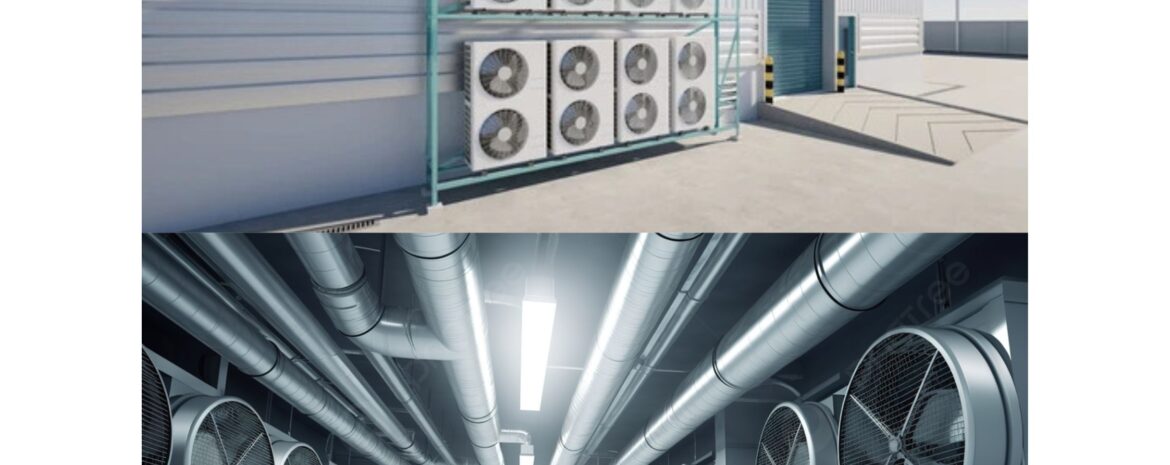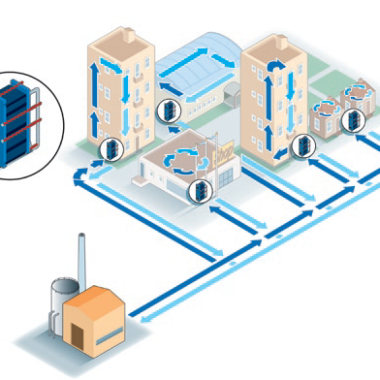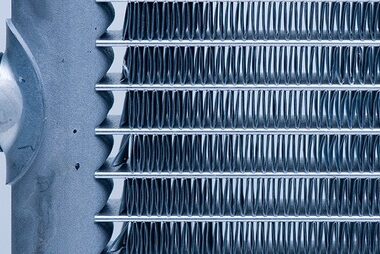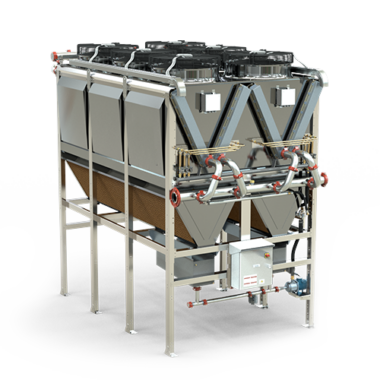Evaporative Cooling Mechanical Cooling
Introduction
Evaporative Cooling vs. Mechanical Cooling is a critical consideration for industries and facilities looking to optimize their HVAC systems. Both cooling methods serve to lower temperatures, but they operate using different principles and are suited for varying environments. Evaporative cooling leverages the natural process of water evaporation to cool air, making it a more energy-efficient and eco-friendly option in dry climates. On the other hand, mechanical cooling relies on refrigeration cycles, offering precise temperature and humidity control, ideal for environments with strict climate requirements. Choosing between the two depends on factors like climate, cost, energy efficiency, and cooling needs.
Principle of Operation
- Evaporative Cooling: Evaporative cooling works by using water to cool the air. The process involves passing warm air over water-soaked pads, which absorb the heat and cool the air through the evaporation process. The cooler air is then circulated into the facility, lowering the overall temperature.
- Mechanical Cooling: Mechanical cooling relies on refrigeration cycles to remove heat. It uses compressors, condensers, and refrigerants to cool the air, which is then circulated throughout the facility. This process is similar to what air conditioners use, involving energy-intensive mechanical components to achieve the desired cooling.
Energy Efficiency
- Evaporative Cooling: Evaporative cooling is known for its energy efficiency, particularly in hot, dry climates. It consumes significantly less electricity because it does not rely on compressors or refrigerants, making it a more eco-friendly option for facilities aiming to reduce energy consumption.
- Mechanical Cooling: Mechanical cooling systems, while effective in a wider range of climates, tend to consume more energy due to the refrigeration cycle. The compressors, fans, and other components require continuous electrical power, making mechanical cooling more energy-intensive.
Cost Considerations
- Evaporative Cooling: The initial installation costs of evaporative cooling systems are generally lower than those of mechanical systems. Additionally, the operational costs are reduced due to lower energy consumption and simpler technology. However, these systems may require more water, which can be a significant operational cost depending on your location.
- Mechanical Cooling: Mechanical systems have higher installation and operational costs due to their complexity and energy usage. The need for regular maintenance of mechanical components also adds to the long-term expenses. However, mechanical systems may be more cost-effective in areas where water is scarce or expensive.
Climate Suitability
- Evaporative Cooling: This system works best in hot, dry climates where humidity levels are low. In such conditions, evaporative cooling can be highly effective at reducing temperatures, making it ideal for facilities located in desert or arid regions. However, its effectiveness diminishes in high-humidity environments, as the air’s capacity to absorb moisture decreases.
- Mechanical Cooling: Mechanical cooling is versatile and can be used in various climates, including areas with high humidity. Since it does not rely on evaporation, it is a more reliable option for facilities located in coastal regions or areas with fluctuating weather conditions.
Environmental Impact
- Evaporative Cooling: With minimal reliance on electricity and no use of refrigerants, evaporative cooling has a lower carbon footprint. It is an environmentally friendly option, especially in regions with access to abundant water. However, water consumption can be a drawback in water-scarce areas.
- Mechanical Cooling: Mechanical cooling systems tend to have a higher environmental impact due to their energy consumption and the use of refrigerants, which can contribute to greenhouse gas emissions. However, newer systems that use eco-friendly refrigerants and energy-efficient designs can mitigate some of these effects.
Maintenance Requirements
- Evaporative Cooling: These systems are relatively simple in design, resulting in lower maintenance requirements. Regular cleaning of pads and checking the water supply are generally all that is needed to keep an evaporative cooling system running efficiently.
- Mechanical Cooling: Mechanical cooling systems have more complex components, such as compressors, fans, and heat exchangers, which require regular servicing. Maintenance is crucial for avoiding breakdowns and ensuring the system operates efficiently, adding to the long-term maintenance costs.
Application in Industrial and Commercial Settings
- Evaporative Cooling: Best suited for open-air facilities, large warehouses, factories, and commercial spaces where doors and windows may remain open. It is also ideal for cooling large areas where direct contact with cooled air is needed.
- Mechanical Cooling: Mechanical systems are commonly used in hospitals, offices, data centers, and environments where precise temperature control and air quality management are critical. They are better suited for closed environments where air recirculation is required.
Air Quality Control
- Evaporative Cooling: Evaporative cooling systems help filter dust and impurities as air passes through the water-soaked pads, contributing to improved air quality. However, they may introduce higher humidity levels, which might not be suitable for environments where precise humidity control is necessary.
- Mechanical Cooling: Mechanical cooling systems offer better control over both temperature and humidity, making them ideal for environments where air quality and precise humidity management are critical, such as clean rooms or data centers.
Scalability
- Evaporative Cooling: These systems are relatively easy to scale for larger areas but may become inefficient in maintaining uniform cooling across large spaces. The cooling effect diminishes over long distances, making them better suited for smaller or localized areas.
- Mechanical Cooling: Mechanical systems offer more flexibility in scalability, whether for small rooms or large industrial facilities. With modular designs, these systems can be expanded to meet growing cooling demands without compromising efficiency.
Lifespan and Durability
- Evaporative Cooling: Evaporative coolers typically have a longer lifespan with fewer mechanical parts, making them more durable and cost-effective in terms of replacement and repairs. However, their lifespan is largely dependent on water quality and pad maintenance.
- Mechanical Cooling: Mechanical cooling systems, although complex, are designed for longevity, especially with regular maintenance. Newer systems also come with advanced materials and technologies that enhance durability, but they do require more frequent servicing.
Conclusion
Choosing between evaporative and mechanical cooling depends on your facility’s specific needs, including energy efficiency, cost, climate, and environmental goals. Evaporative cooling excels in energy savings and environmental benefits in hot, dry climates, whereas mechanical cooling is more versatile and effective in controlling temperature and humidity across various climates. Understanding the operational differences and considering long-term cost implications can help you make the best decision for your facility’s cooling needs.






